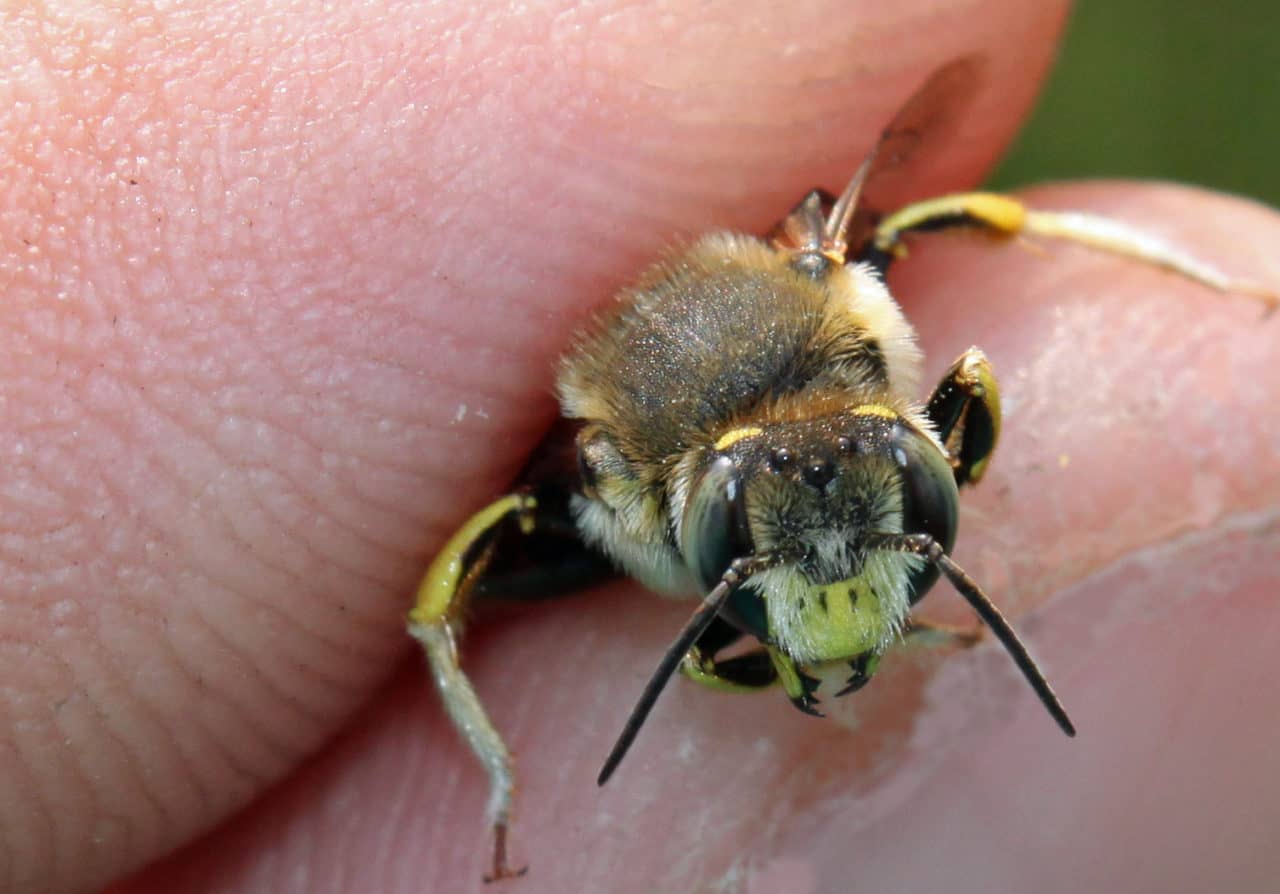
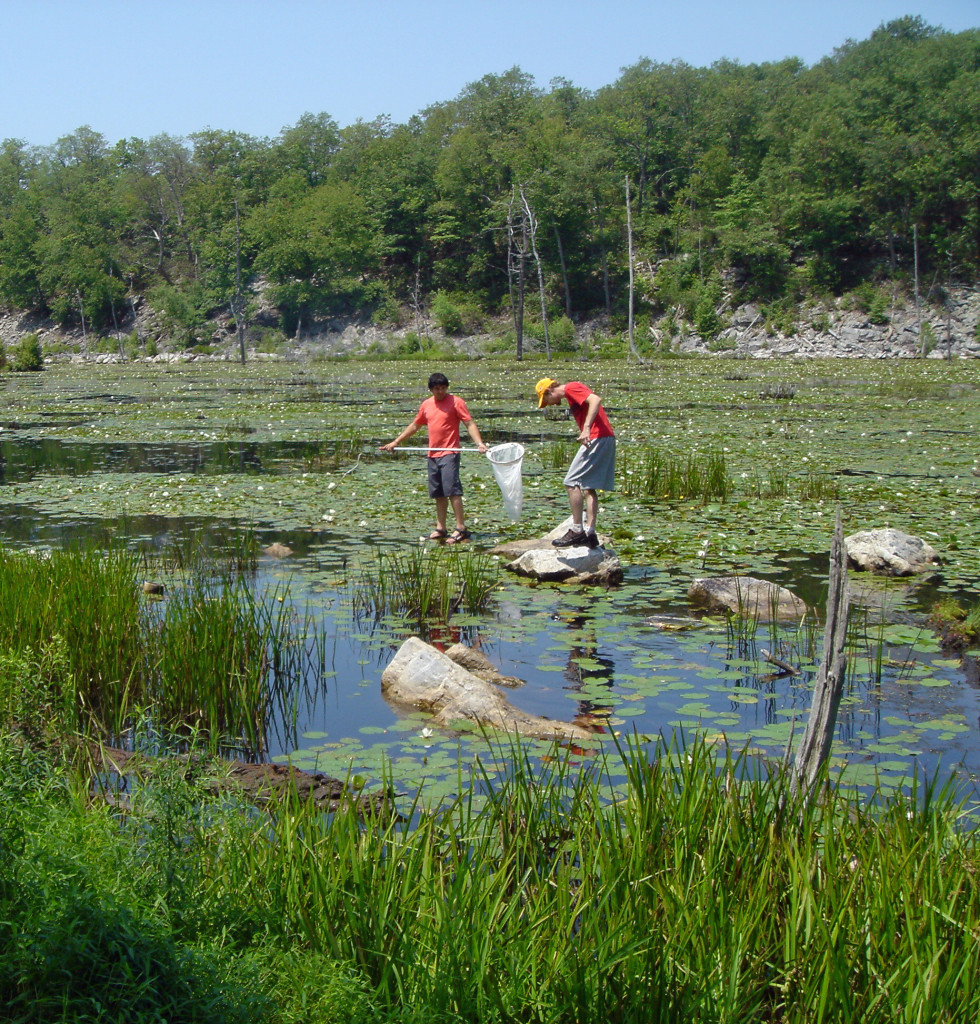
Before going out to collect bees there are a few things that you will need. Some of items are essential for collecting faster flying specimens. You should have small lidded containers to place the bees in. If you put small pieces of tissue in the container, those pieces give the bees something to hold on to and prevent the bees from becoming wet from regurgitated nectar. Using a net is the easiest method to collect bees. Try to avoid decapitating flower heads when collecting bees. One way to do this is to watch the direction that the bees fly away from the floral source and anticipate that flight motion when swinging the net. Another useful colleting tool is an aspirator. To use this apparatus you inhale on a tube creating suction to vacuum insects into a collection tube (again place tissue inside the collection tube). Aspirators allow you to collect multiple bees from your net fast and with minimal stings. Be aware that some species like Megachile (Leaf-Cutter Bees) will damage other bees by using their mandibles to clip off antennae, legs and wings. Bees can also be hand collected off flowers. For me this is the most gratifying way to collect them. It usually involves a sting or a bite but you can feel the defense
line of this magnificent little creature.
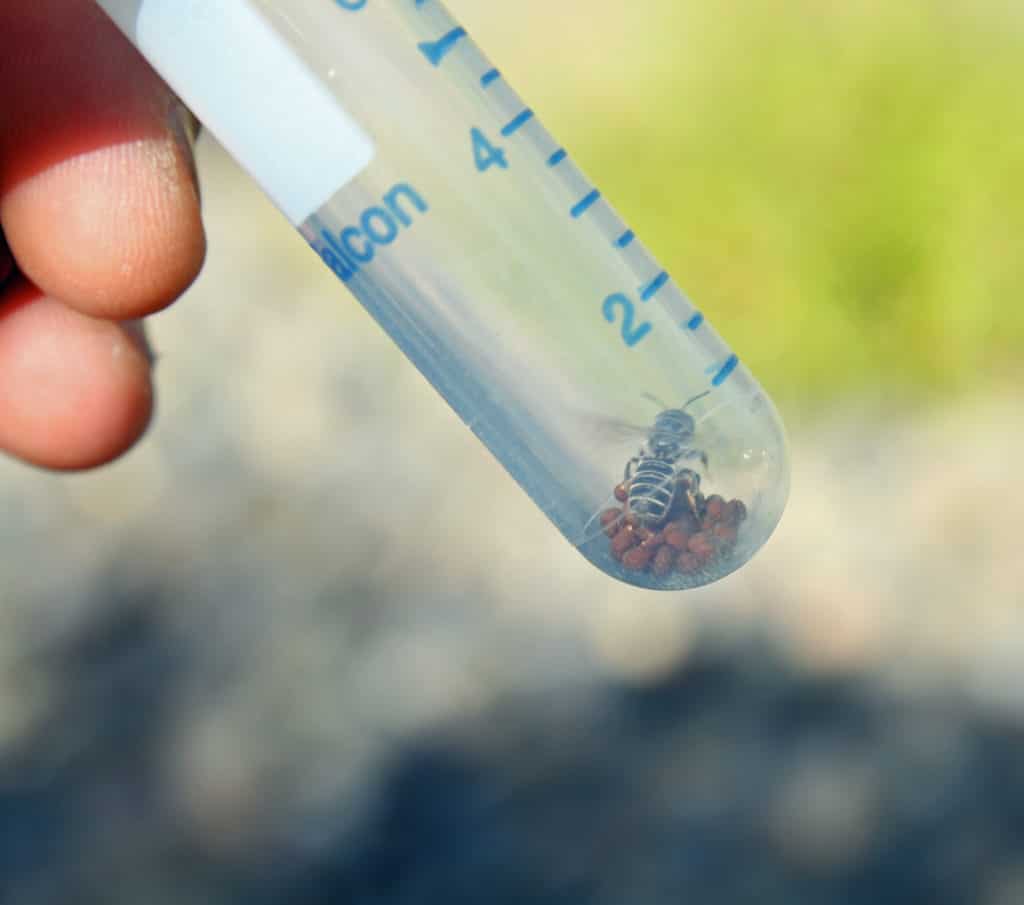
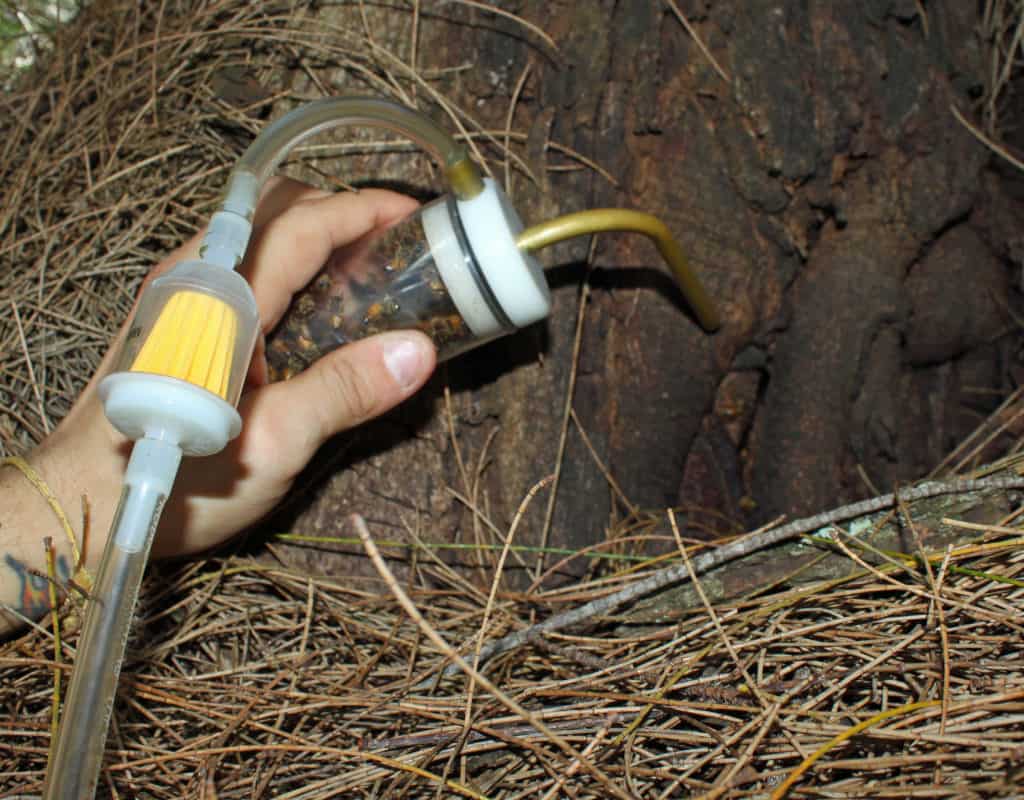
Now that you know the basics for what is needed to collect bees you need to look at where to find them. It is best to start in areas with primary or secondary succession. An example of primary succession would be a small mudslide or soil shift in the forest caused by heavy rain. Primary succession environments lack vegetation and may not even have topsoil. This mudslide may have created new nesting sites for ground nesting bees. An example of secondary succession would be an area that was cleared by humans or animals allowing new plants to arise but where soil already exists and where primary succession has already occurred but has been disturbed or destroyed. Also within these successional areas you will find cyclical and seasonal succession. It may take years of observations to map out seasonal and cyclical succession of plants and flowers so taking photographs assists in documenting floral trends in successional areas. Below is an image of a secondary successional area that I have been observing over the past 4 years. Note the flowers that I have drawn arrows to. These are areas you would want to look for bees. In general, wherever flowers are located you will find bees. Also, increased diversity in flowers creates more diversity in bees.
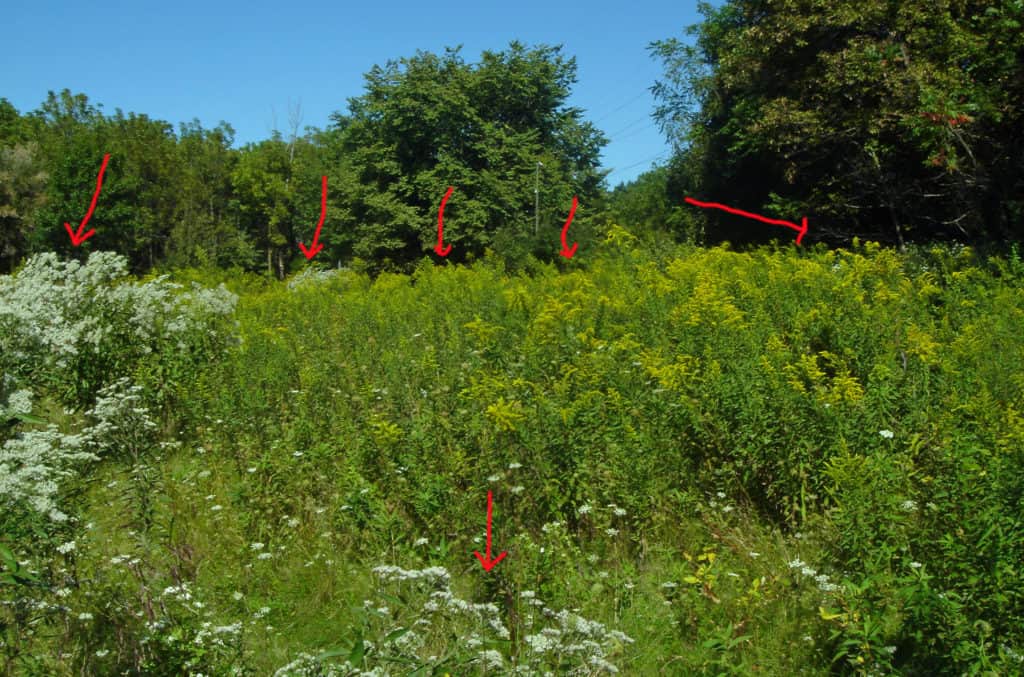
Now that you know what you need to collect bees and where to find them you can begin your collection. It is best to store the bees in the freezer over night to kill them. If you do not wish to collect bees, but only observe them, this information is still useful as it is good to know where bees congregate so that they can be observed. It still amazes me that there are so many different species of these small pollinators. I almost always see something I have never noticed before when out in the field looking for the bees. The key to finding the bees and observing them is to slow down, be patient, and think like a bee.

